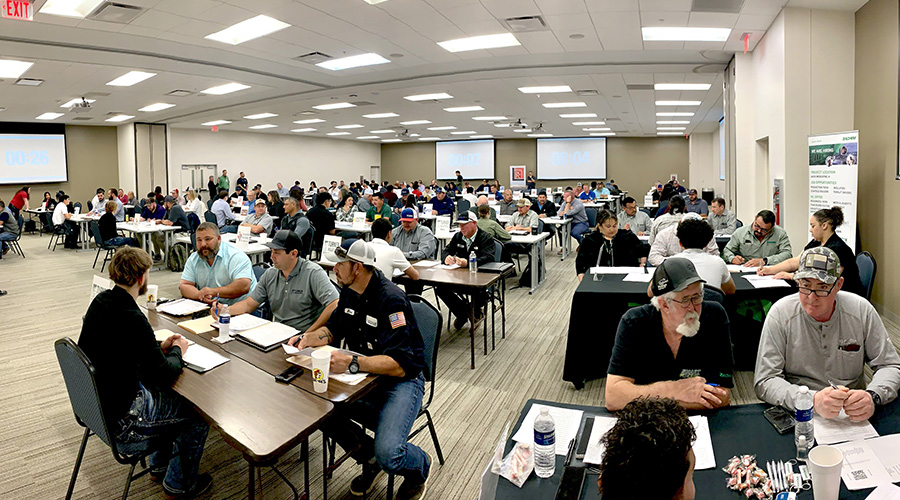Reducing Operating Costs
What is the worst that could happen?
That’s not really a fun question to think about, but it’s one that’s echoing off the walls of more and more C-suites these days as operations and maintenance budgets are scrutinized and upper managers and facility executives are paring budgets down to bare bones.
Preventive and non-critical maintenance are often regarded as opportunities for cuts. And it’s up to facility executives to figure out exactly where.
So what’s the worst that could happen if a fluorescent lamp that burned out isn’t immediately replaced? Or a filter on an air conditioning unit is not immediately changed out? Or trash cans are emptied every third day instead of every night?
Facility executives should think hard about the answers to questions like those, and then measure those answers against a pre-existing priority list of systems — like life-safety, HVAC, etc. How will those systems will be affected if a preventive maintenance cycle is skipped or non-critical maintenance is not performed?
“Put all your assets in relative order to each other,” says Mike Cowley, president, CE Maintenance Solutions. “Priorities should be agreed upon by top management. Give them options. Agree on the most important assets you have and how critical those things are to your overall operations.”
A key component of this priority list is knowing exactly how much preventive maintenance is being done and what it is costing. This is to say that solid metrics are even more critical in a budget crisis than they may be normally. Simply stopping preventive maintenance on a system without understanding the consequences, or knowing when it’ll be possible to restart, is a poor way to cut costs, say experts.
“Running to failure may be acceptable,” says Cowley. “But you have to be prepared to accept the consequences.”
Cowley says that the preventive maintenance rule of thumb is that if you go through six PM cycles, and don’t find anything wrong, it’s time to stretch out the frequency a bit. But during budget cuts, it may be necessary to stretch out the frequency even more.
Energy Tips
Energy is another likely candidate for belt-tightening. Even if facility executives have all the latest, most energy efficient equipment, there are still further steps that can be taken.
“Make sure all controls are actually working,” says Lindsay Audin, president of EnergyWiz, Inc. “You don’t have to do a full commissioning, but if lights aren’t being shut off properly at night, you’re wasting money.”
Audin also recommends carefully examining any plug loads that don’t contribute to the core nature of the business. “Some of these include perks in the office, like coffee makers and vending machines,” he says.
Use motion-detecting devices that turn off vending machines at night. Use carbon dioxide detectors to make sure there’s just enough fresh air in a building. Use thermostats that can be programmed for a wider “deadband” — the range thermostats are allowed from the set point to the actual air temperature.
The problem is that, in a budget crunch, it may be a tough sell to spend a few thousand dollars to ultimately save money. “If you’re expected to cut 10 percent out of your budget, and you go into the CFO’s office talking about ROI, even for an expenditure of $1,000, you’ll probably get kicked out,” says Audin.
Instead, says Audin, consider a performance contract and rolling in those relatively minor upgrades. That way, no upfront capital is required, but savings can still be realized almost immediately.
Audin also recommends taking a look at utility contracts if facility executives are buying electricity or natural gas in deregulated markets. One possibility is a “blend and extend,” which is most common with natural gas. Say facility executives are currently paying $10 per decatherm in the second year of a two-year contract. If it looks as though gas prices may drop next year to $8 per decatherm, facility executives could extend the contract another year and blend the current rate with the future rate, paying $9 now and through the third year. So there would be $1 savings this year, cutting costs when cuts are most needed. It’s just a way to cut operational costs now — and spread them out into the future.
One final tip experts recommend is asking occupants for suggestions. Communications with the folks spending eight (or more) hours per day in a building is absolutely essential. If the thermostat is turned down a few degrees to save energy or coffee makers or vending machines are taken away, occupants can get surly. But if occupants are given the opportunity to provide input, they’re often more willing to accept cuts. They become aware that facility executives are working hard to save money — which may save their jobs.
Related Topics:













